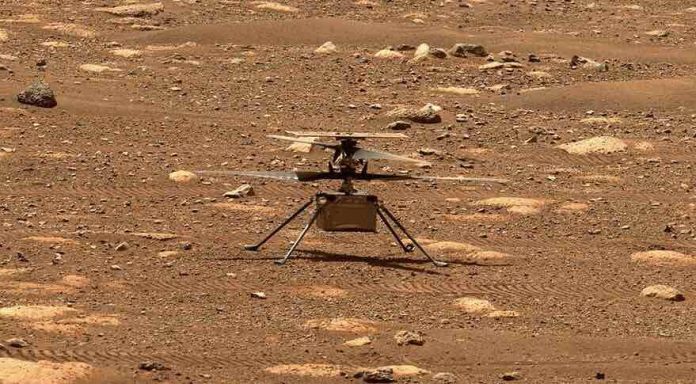China has revealed plans for what it is calling a “Mars cruise drone”, and it looks very familiar to another flying vehicle we all know and love traversing the skies of the Red Planet right now. But you know what, the more the merrier, we say. Mars has plenty of secrets to give up and it’s an ideal testing ground for pushing what humanity is capable of in space exploration.
China’s National Space Science Center (NNSC) has shown off a prototype Mars helicopter that it says will be fitted with a micro spectrometer for the nation’s “subsequent Mars exploration.” The drone passed a final acceptance project review on August 20.
There’s no hiding it, it looks very similar to NASA’s ground-breaking and truly historic plucky little helicopter-that-could, Ingenuity. It even has Ingenuity’s double pair of blades, which, to be fair, makes sense considering the need for them. With so few molecules to push against in the thin Martian atmosphere, the helicopter’s two sets of blades need to spin in the opposite direction at around eight times faster than a regular helicopter on Earth to get some lift. That’s around 2,400 rpm (revolutions per minute).
When NASA scientists first sent Ingenuity off to another world with their latest Mars rover, they didn’t know for sure that the helicopter would get off the ground, let alone smash its own goals (recently completing its 12th flight) to go on and become a fully-fledged member of Team Science alongside Perseverance. So, for China, it makes sense to watch your peers and build on their knowledge. However, China has been considering an eye in the sky on Mars for a while, as space journalist Andrew Jones who broke the story pointed out on Twitter.
An aerostat was considered for Tianwen-1, China’s first Mars mission, which successfully delivered its Zhurong rover to Mars, becoming the second nation ever to successfully land a working rover on the Red Planet. An aerostat is a type of uncrewed airship, or blimp, and the plan — had it been chosen — would have seen it tethered to the ground but flying between 1 and 5 kilometers (0.6 and 3.1 miles) in the air for a week. The Chinese Academy of Space Technology was also considering balloons and UAVs, according to Jones.
While China catches up and hopefully develops new technologies and boundaries to push while doing so, NASA has already revealed plans for its next high-flying explorer. Dragonfly, a larger and more sophisticated rotorcraft, is set to explore the skies of Saturn’s largest moon Titan, launching in 2027 and arriving in 2034.
China’s next mission to Mars is scheduled as a sample return mission, and will most likely take place in the 2028 or 2030 launch window. Whether it will include the cruise drone, we’ll have to wait and see.





























